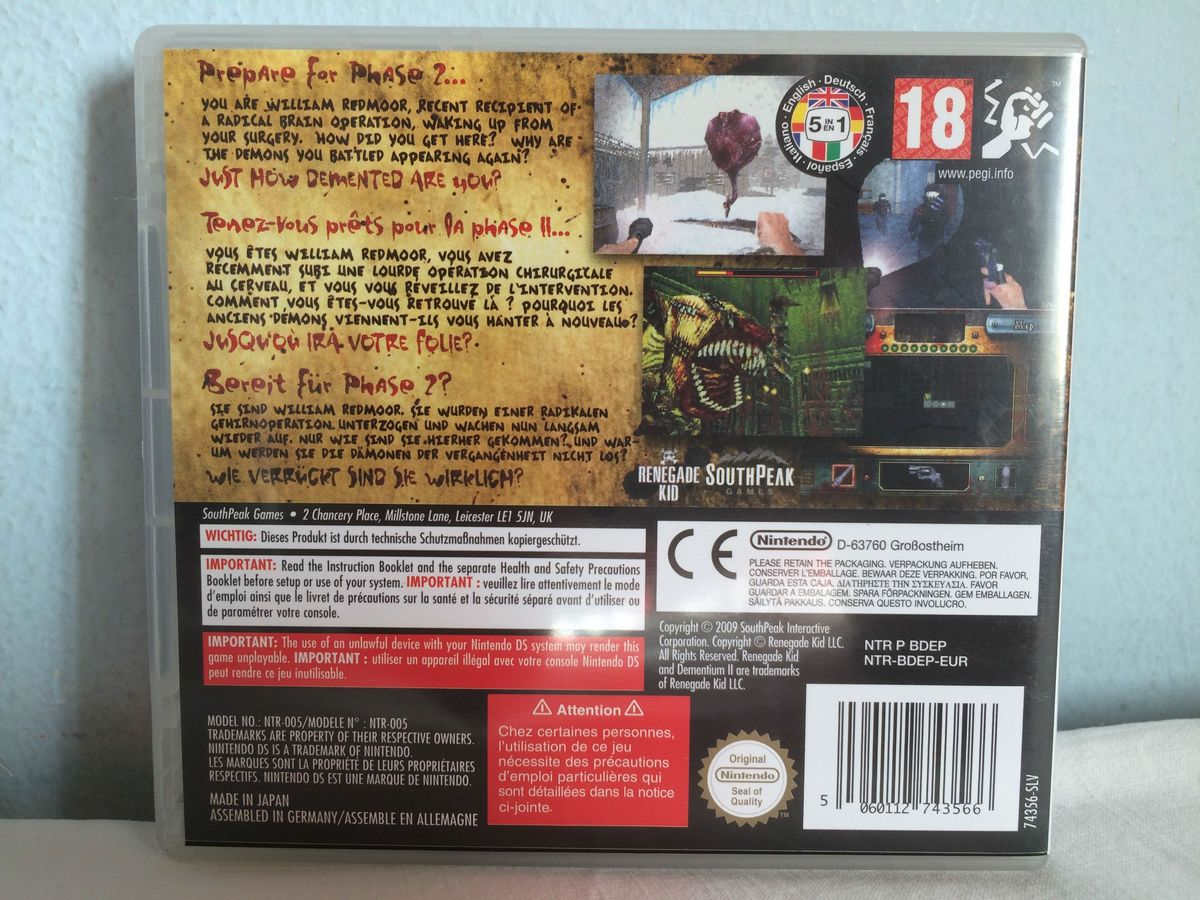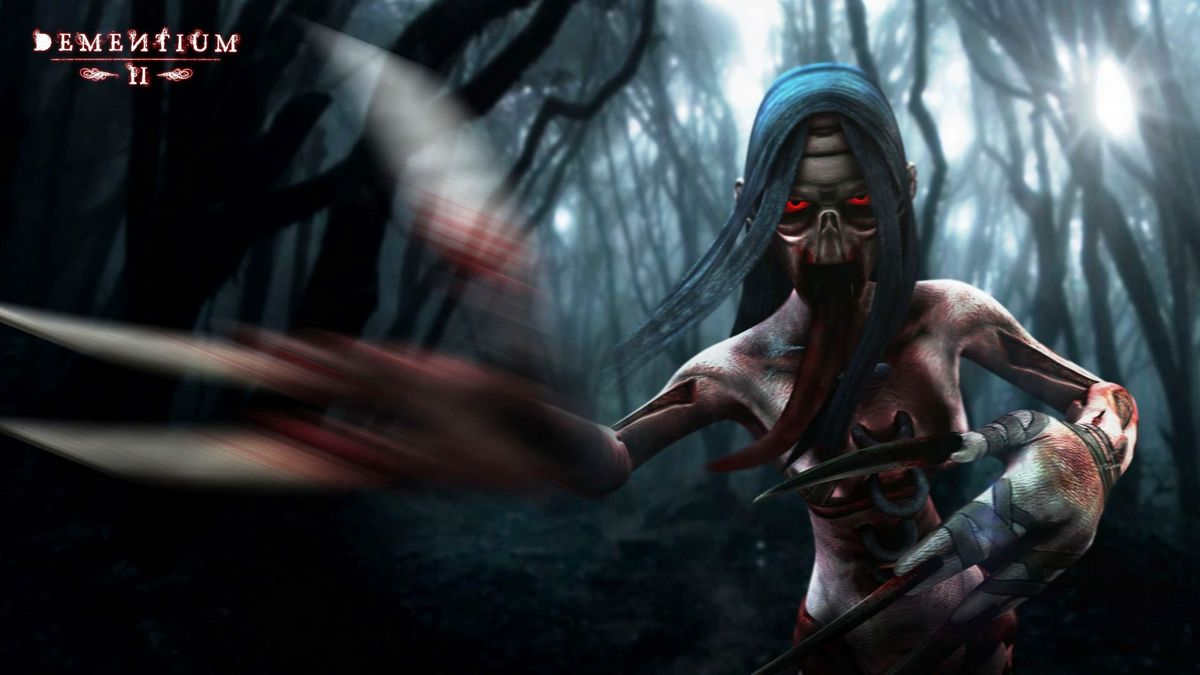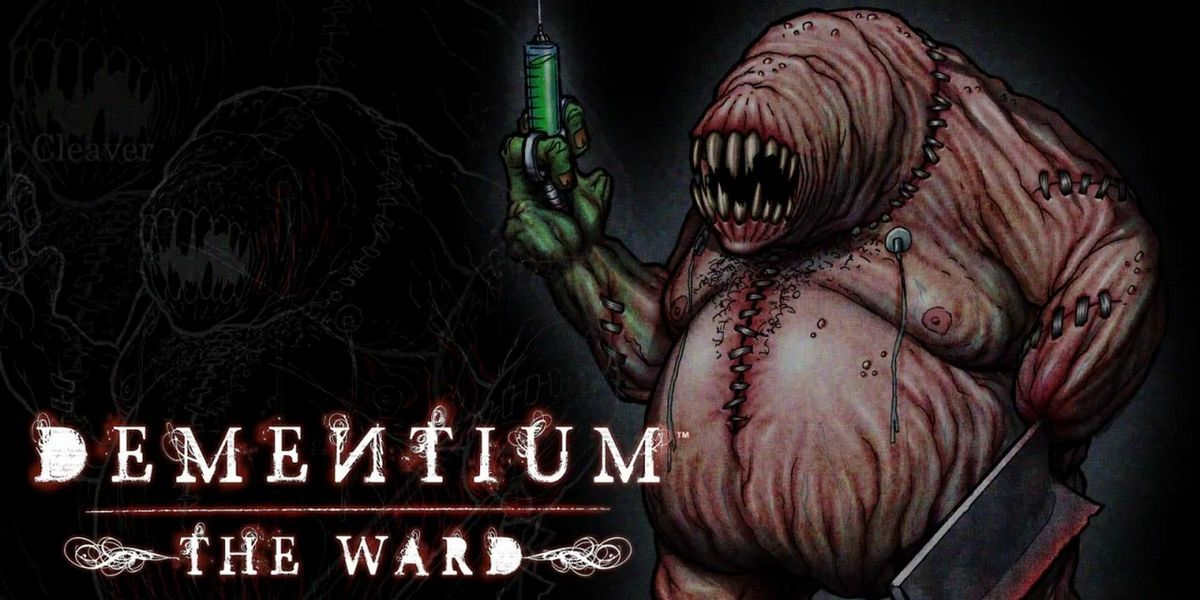Dementium II is a game that has captured the attention and imagination of gamers worldwide. It is a survival horror game that was developed by Renegade Kid, and published for the Nintendo DS platform in 2010. The game builds upon its predecessor Dementium: The Ward, by introducing new gameplay mechanics, improved graphics, and an even more terrifying storyline.

As an expert on survival horror games, it’s clear to me that Dementium II stands out as one of the most impressive titles to grace the genre. From its haunting atmosphere to its gruesome enemies, this game delivers a chilling experience that will leave players on edge from start to finish.
In this article, we’ll dive deep into what makes Dementium II such a standout title within the survival horror genre. We’ll explore its gameplay mechanics, story elements, level design, and sound design in detail – analyzing each aspect of the game with an expert eye.
So whether you’re a longtime fan or simply curious about what sets this game apart from others like it – join us as we take an in-depth look at Dementium II.
- An Introduction to Dementium II: Exploring the Dark and Twisted World of Survival Horror Games
- The Gameplay Mechanics of Dementium II: A Close Look at Combat, Exploration, and Puzzles
- Monsters in Dementium II: Analyzing the Psychological Horror Elements Behind Their Design
- The Music and Sound Effects in Dementium II: How Audio Enhances the Atmosphere of a Scary Game
- Narrative Techniques in Dementium II: Using Visuals and Text to Tell a Compelling Story
- Level Design Philosophy in Dementium II – Examining how game designers made use of different spaces
- Characterization in Video Games – Dissecting how characters were brought to life within this horror game
- Creating Tension through Lighting Effects – Analyzing how darkness is used as a tool for building suspense throughout gameplay
An Introduction to Dementium II: Exploring the Dark and Twisted World of Survival Horror Games
The game immerses players into a nightmarish world filled with grotesque creatures, derelict environments, and psychological terror. As they navigate through this macabre landscape, players must use their wits and limited resources to survive while uncovering the mysteries surrounding their character’s past.
The gameplay mechanics of Dementium II are reminiscent of traditional survival horror games from the early 2000s. Players must conserve ammunition, scavenge for supplies, and solve puzzles to progress through each level. However, what sets Dementium II apart is its unique art style that blends realistic textures with surrealistic imagery. This approach creates an unsettling atmosphere that permeates every aspect of the game.
Despite being released over a decade ago in 2010 for Nintendo DS platform initially but later made available on PC in 2013 via Steam digital distribution platform under publisher Digital Tribe Games banner; Dementium II remains one of the most memorable entries in the survival horror genre due to its haunting visuals and psychologically disturbing narrative elements.
The Gameplay Mechanics of Dementium II: A Close Look at Combat, Exploration, and Puzzles
The combat system in Dementium II is heavily reliant on the player’s ability to react quickly to enemy attacks and adapt accordingly. Players must master various weapons and learn how to use them effectively in order to survive encounters with disturbing creatures that lurk throughout the game world.
Exploration also plays a key role in Dementium II’s gameplay mechanics. Players are encouraged to explore every nook and cranny of each level in order to uncover hidden secrets such as ammunition, health packs, and other useful items. Additionally, players will need to solve puzzles as they progress through the game – some of which require careful observation of their surroundings or manipulation of objects within the environment.
One unique aspect of Dementium II’s gameplay mechanics is its reliance on psychological horror elements. The game uses sound design, lighting effects, and other techniques to create an unsettling atmosphere designed to keep players on edge throughout their journey. This approach heightens players’ sense of immersion in the game world while also adding an additional layer of challenge when facing enemies or solving puzzles.
Overall, Dementium II presents a challenging but rewarding experience for fans of survival horror games who enjoy testing themselves against complex gameplay systems focused on combat, exploration, and puzzle-solving. Its unique blend of psychological horror elements helps it stand out from similar titles within the genre while still delivering a satisfyingly terrifying experience for those brave enough to take it on.
Monsters in Dementium II: Analyzing the Psychological Horror Elements Behind Their Design

These creatures are designed to be psychologically terrifying, and their appearance and behavior reflect this intention. The design of these monsters is based on the psychological concept of uncanny valley, which refers to the discomfort people feel when encountering something that looks almost human but not quite.
The monsters in Dementium II are characterized by their twisted bodies, distorted faces, and erratic movements. They evoke fear by tapping into primal human instincts such as disgust and revulsion. The use of sound effects also adds to the horror element as players can hear groans, shrieks, and other unsettling noises emanating from these creatures.

Furthermore, each monster has a unique backstory that further contributes to its psychological impact on players. For example, one creature named “the Screamer” was once an innocent girl who was experimented on by mad scientists until she became a mindless abomination. This narrative helps players connect with the horror elements at an emotional level.
In conclusion, Dementium II’s monsters are designed with meticulous attention paid towards creating psychologically impactful characters. The use of uncanny valley principles combined with evocative backstories makes them some of the scariest video game enemies out there today. Players looking for truly spine-chilling gameplay experience will find all they need in Dementium II’s terrifying world full of hauntingly realistic monsters!
The Music and Sound Effects in Dementium II: How Audio Enhances the Atmosphere of a Scary Game
The game’s audio is designed to heighten the player’s sense of fear and uncertainty, placing them at the center of a dark and foreboding world.

From the haunting melodies that accompany each level to the eerie creaks and groans of the asylum itself, every aspect of Dementium II’s audio has been carefully crafted to draw players deeper into its twisted world. The use of dynamic music also adds an extra layer of tension, with the soundtrack changing depending on whether the player is exploring or engaged in combat.
Sound effects are equally important in enhancing gameplay – from footsteps echoing down empty corridors to sudden screams and growls heard just out of sight. These subtle touches make even mundane actions like opening doors or picking up items feel more ominous, constantly reminding players that danger lurks around every corner.
Overall, it is clear that much thought went into crafting Dementium II’s audio experience. By using expertly crafted music and sound effects throughout their game design process, developers have created a chilling horror experience unlike any other – one where players will be kept on edge until they reach its bone-chilling conclusion.
Narrative Techniques in Dementium II: Using Visuals and Text to Tell a Compelling Story
The game uses visuals and text to tell the story of protagonist William Redmoor, who wakes up in an abandoned hospital with no memory of how he got there. As players navigate through the dark corridors of the hospital, they uncover clues about William’s past as well as the mysterious events that led to his confinement.
One effective visual technique used in Dementium II is lighting. The use of dimly lit rooms and flickering lights creates an ominous atmosphere and adds to the suspenseful nature of the game. Additionally, sound effects such as creaking doors and footsteps contribute to this effect by immersing players in the eerie setting.
In terms of text, Dementium II features notes scattered throughout levels which provide insight into important plot points while also fleshing out characters’ personalities and motivations. This method allows for gradual storytelling rather than overwhelming players with too much exposition at once.
Overall, Dementium II uses both visuals and text in a masterful way to create an engaging story that keeps players invested until the very end.
Level Design Philosophy in Dementium II – Examining how game designers made use of different spaces
The game designers have made use of various level design techniques such as environmental storytelling, spatial awareness, and player navigation to create an immersive experience for players.
In Dementium II, players are constantly kept on their toes as they navigate through dark corridors, twisted hallways, and eerie rooms. The use of lighting and sound effects further add to the atmosphere of dread in the game. The design team has also incorporated hidden passages and secrets throughout each level that require careful observation from players to uncover.
One notable feature in Dementium II’s level design philosophy is how it encourages exploration without sacrificing direction or purpose. Players are given clear objectives but are free to explore each area at their own pace. This allows for a more organic gameplay experience while still maintaining a strong narrative thread throughout the game.
Overall, the Level Design Philosophy in Dementium II is focused on creating an immersive horror experience that relies heavily on manipulating different spaces within each level. It successfully utilizes various level design techniques to keep players engaged while delivering a spine-chilling adventure that will stay with them long after they put down their controller.
Characterization in Video Games – Dissecting how characters were brought to life within this horror game
This is especially true of horror games, where the characters must be brought to life in order to fully immerse players within the game’s world. In Dementium II, character development is integral to the overall success of the game.
One of the key ways that Dementium II brings its characters to life is through their physical appearance and behavior. Each character has a unique design that reflects their personality, motivations, and role within the game’s narrative. Additionally, their movements and actions are carefully crafted to reinforce these traits.
Another important aspect of characterization in Dementium II is dialogue. The game features extensive voice acting and written dialogue that serves not only to provide exposition but also further develop each character’s personality and backstory. By giving players insight into what motivates each character, they become more invested in both them as individuals as well as their interactions with other characters within the game.
Overall, Dementium II succeeds at creating memorable characters through a combination of visual design and storytelling techniques. By paying close attention to every detail from appearance down to mannerisms and speech patterns, players are able to form connections with these virtual individuals just like they would with real people – making for a truly immersive gaming experience.
Creating Tension through Lighting Effects – Analyzing how darkness is used as a tool for building suspense throughout gameplay
Dementium II is a perfect example of how darkness is used as a tool for building suspense throughout the game. The game employs various lighting techniques to create an eerie atmosphere that keeps players on edge.
One of the most effective methods used by Dementium II is strategic use of unlit areas. Areas with little or no light make it difficult for players to see what’s ahead, leaving them feeling vulnerable and disoriented. This technique not only creates tension but also forces players to pay attention to their surroundings, making every decision they make more critical.
Another way Dementium II builds tension through lighting effects is by using flickering lights or sudden changes in light levels. These techniques keep players guessing and on edge, never quite sure what might be lurking around the next corner. It’s an effective tactic that makes each encounter feel unpredictable and dangerous.
Overall, Dementium II uses darkness as a tool masterfully throughout its gameplay experience. By employing various lighting techniques like unlit areas, flickering lights, and sudden changes in light levels, it keeps players tense and unsure about what lies ahead at all times. Such games are excellent examples of how good design takes into consideration elements beyond just mechanics; they engage our senses deeply enough to make us feel invested in the virtual world we’re exploring – bringing out emotions that would otherwise remain dormant within us during reality-based scenarios!
In conclusion, the game Dementium II presents a truly immersive and terrifying experience for players who are fans of horror and survival games. It boasts an atmospheric setting that transports players to a world of madness and despair, while its gameplay mechanics challenge their wits and reflexes.
The game’s visuals are stunningly realistic, with detailed character models, environments, lighting effects, and sound design that create an eerie ambiance. The controls are smooth and responsive, allowing players to navigate through the maze-like levels with ease.
Furthermore, Dementium II features a solid storyline that keeps players engaged throughout their journey. The narrative is complemented by well-crafted cutscenes that provide context to the events happening in-game.
Overall, Dementium II is a must-play title for any avid gamer who seeks a thrilling adventure in a dark world full of dangers. Its combination of horror elements with action-packed gameplay makes it stand out from other survival games in the genre. So if you’re up for some spine-tingling encounters with demonic creatures and twisted monsters lurking around every corner – look no further than this gem!
Read More:- Survive the Horror of Game NightCry: A Thrilling Interactive Experience.
- Experience eerie horror in Call of Cthulhu: Dark Corners of the Earth | Game Review.
- Discover the Horror and Mystery of Corpse Party Game – Play Now!.
- Unveil the Mysteries of Eternal Darkness: Sanity's Requiem in this Classic Horror Game (68 characters).
- Survive the horrors of Darkwood: A spine-chilling game experience.
- Experience the Horror: Fatal Frame II – Crimson Butterfly Game Review.
- Experience spine-chilling horror with Clive Barker's Undying game – Get ready for a thrill ride!.